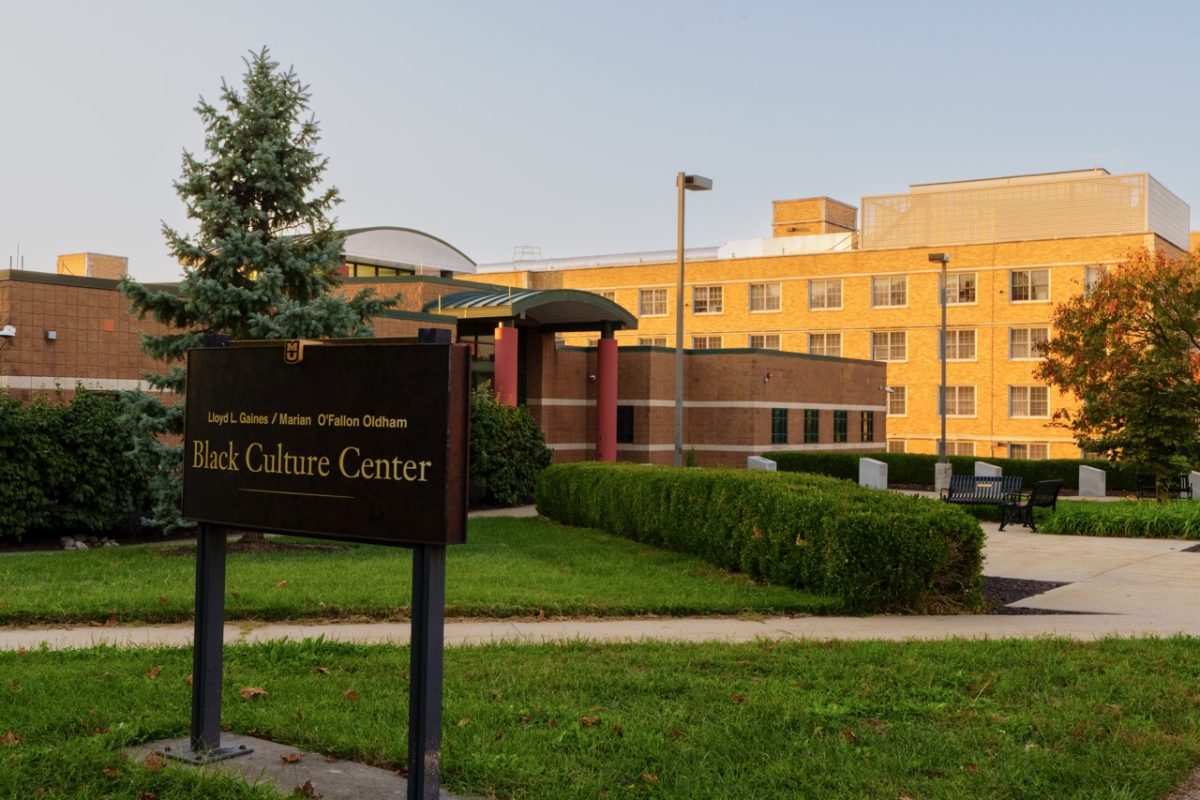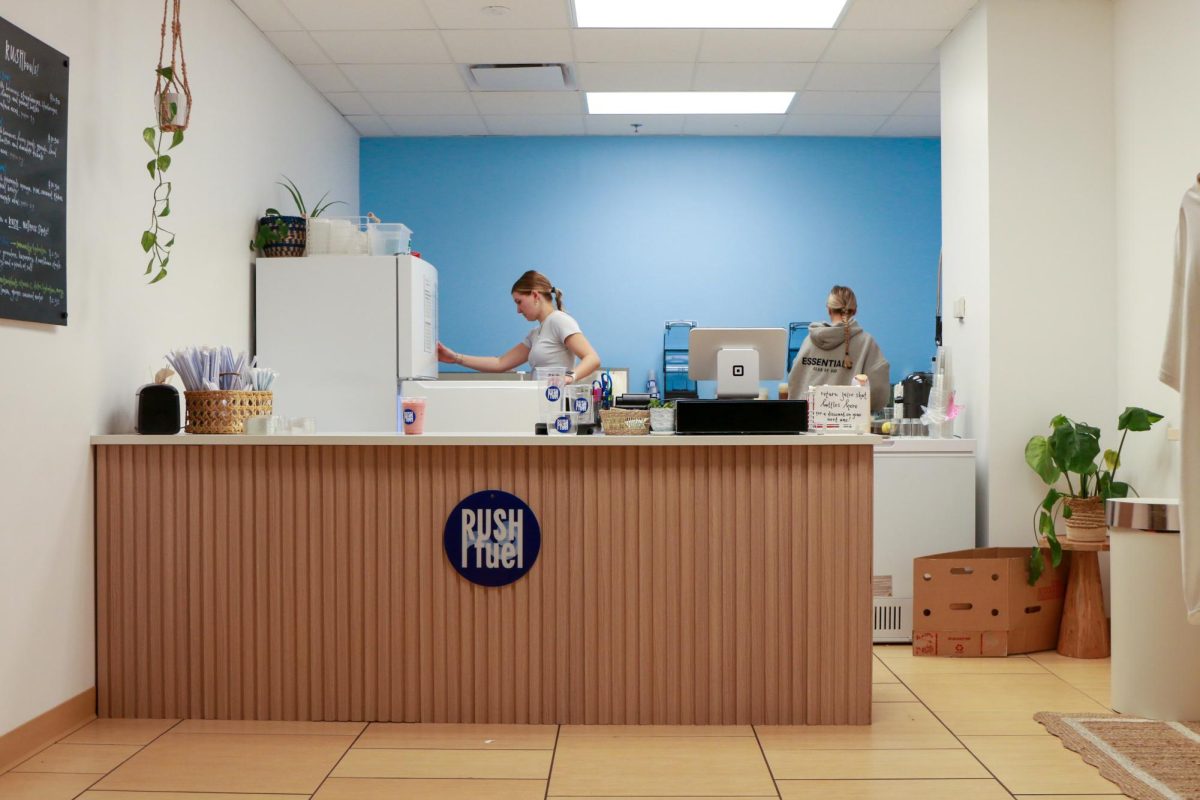Faculty of the School of Music are currently spread out across six buildings on campus, including a repurposed gymnasium and cafeteria. But in January, construction on a new building for the school will begin, bringing the various faculty and students together under one roof.
“[Separate locations] are not great for musicians, because musicians need to collaborate,” School of Music Director Julia Gaines said. “So that means they need to be near each other. The singers need to be around the instrumentalists, the composers need to be around other people, and right now we have them segregated all over campus.”
Plans for the new facility, which will cost an estimated $45 million and include a 500-seat concert hall, were revealed March 21.
The current space for the school, the Fine Arts Building, also houses art and theater and was built in 1961.
“From the get-go, we have had no large ensemble rehearsal spaces,” Gaines said. “[The Fine Arts Building] was pretty much inadequate the minute it was built.”
Many of the spaces currently used by the school were never intended to be music buildings. McKee Gymnasium used to be an athletic facility and is now used as a space for the choir and opera to rehearse. Another, Loeb Hall, used to be a cafeteria, but is now used by bands and orchestras to rehearse.
“[In Loeb Hall] there’s a giant column in the middle of the rehearsal area,” said Stefan Freund, artistic director of the Mizzou New Music Initiative. “It’s basically where first and second flute would be in an orchestra. So, when there’s an orchestra rehearsal in Loeb, the conductor has to use a very unconventional setup.”
In McKee Gymnasium, musicians are hampered by the building’s loud window air-conditioning units, Freund said.
“I’ve done recordings in McKee and we have to basically cool off the room and then turn off the air conditioning and record a little bit and then take a break and turn it back on because it’s so loud,” Freund said.
Two of the buildings currently used by the School of Music, Loeb and the Fine Arts Annex, are in such bad condition and so expensive to maintain that they will be demolished when the school moves out, Gaines said.
“Our facilities are awful compared to most any of our peers,” Gaines said. “Students are coming from high schools with much better facilities than ours.”
Gaines hopes the new facility will help attract students and faculty to MU.
“We do have excellent faculty, but they have to work so hard
in connecting with new students because we are overcoming such awful facilities,” Gaines said. “It’s a big impediment towards recruiting. We still have great students that come here and we still have fantastic faculty, so I’m thrilled that they’re still coming even though we have awful facilities. I can’t imagine what it’s going to be like when we have facilities to match the talent level of our students and faculty.”
Current plans for the new building include rehearsal spaces, a recording studio, learning labs and performance halls.
“It’s funny, I was thinking the other day that a number of the composition students that we had and ended up coming to the University of Missouri didn’t see our facilities here,” Freund said. “They did not visit Columbia. And I wonder if it’s actually a positive not to come here and see our desperate situation.”
Talk about a new building for the school has been going on for decades. The current initiative comes as a result of a $10 million donation to the project from long-time supporters of the school, Jeanne and Rex Sinquefield.
“We gave money and basically it’s because I want to make Missouri a mecca for musical competitions,” Jeanne Sinquefield said. “I want to find and grow our composers, which means we need musicians and we need audiences and concerts.”
The Sinquefields have previously given money to support composition competitions and summer camps for high school students and the Mizzou New Music Initiative, which provides scholarships and supports the Mizzou New Music Ensemble.
“I’ve been doing this program for 11 years, and you get to a point that if you want to grow, you need a space,” Jeanne Sinquefield said. “I typically don’t like to give money to buildings unless there’s a clear need. In this particular case, it meant that we could do some really interesting things. Think about it, attracting the best students and the best faculty.”
The School of Music has raised an additional $6 million in private funding, and the university has promised $8 million to the project. The school had hoped to receive state funds to match the money raised from private donors, but that might not happen this legislative session.
“The problem is the state is in a deficit this year, and clearly we’re already fighting for funding just to run MU, let alone what might be considered as extra projects,” Gaines said. “That $16 million that we were hoping for has definitely caused us to be a little bit more aggressive seeking out private funding.”
The project will likely be completed in two phases, unless the school can raise additional funds before construction starts. The Board of Curators approved the first phase of the project in December. If the school does not raise another $20 million soon, the 500-seat concert hall will wait until phase two.
“I think that if people want a great university, then they need to give the money to make things happen,” Jeanne Sinquefield said. “I think private individuals are going to have to step up and add value.”
The school has hired Kansas City-based architecture firm BNIM and St. Louis-based acoustician Kirkegaard Associates. Right now, the school hopes to move into the new building in summer 2019.
“I look forward to having my office and rehearsal space and hopefully concert space all in the same building,” Freund said. “That would be amazing and just having nice aesthetic, pleasing and also effective rehearsal spaces.”
The new building will be located at Hitt Street and University Avenue. The 500-seat concert hall will primarily serve the School of Music, but might also provide opportunities for other community groups to perform, Gaines said.
“I think it will provide the community’s citizens with a listening experience unlike what they’ve ever had before,” Gaines said. “Nowhere in this town can somebody really go and hear an orchestra the way an orchestra is meant to be heard.”
_Edited by Kyle LaHucik | [email protected]_








